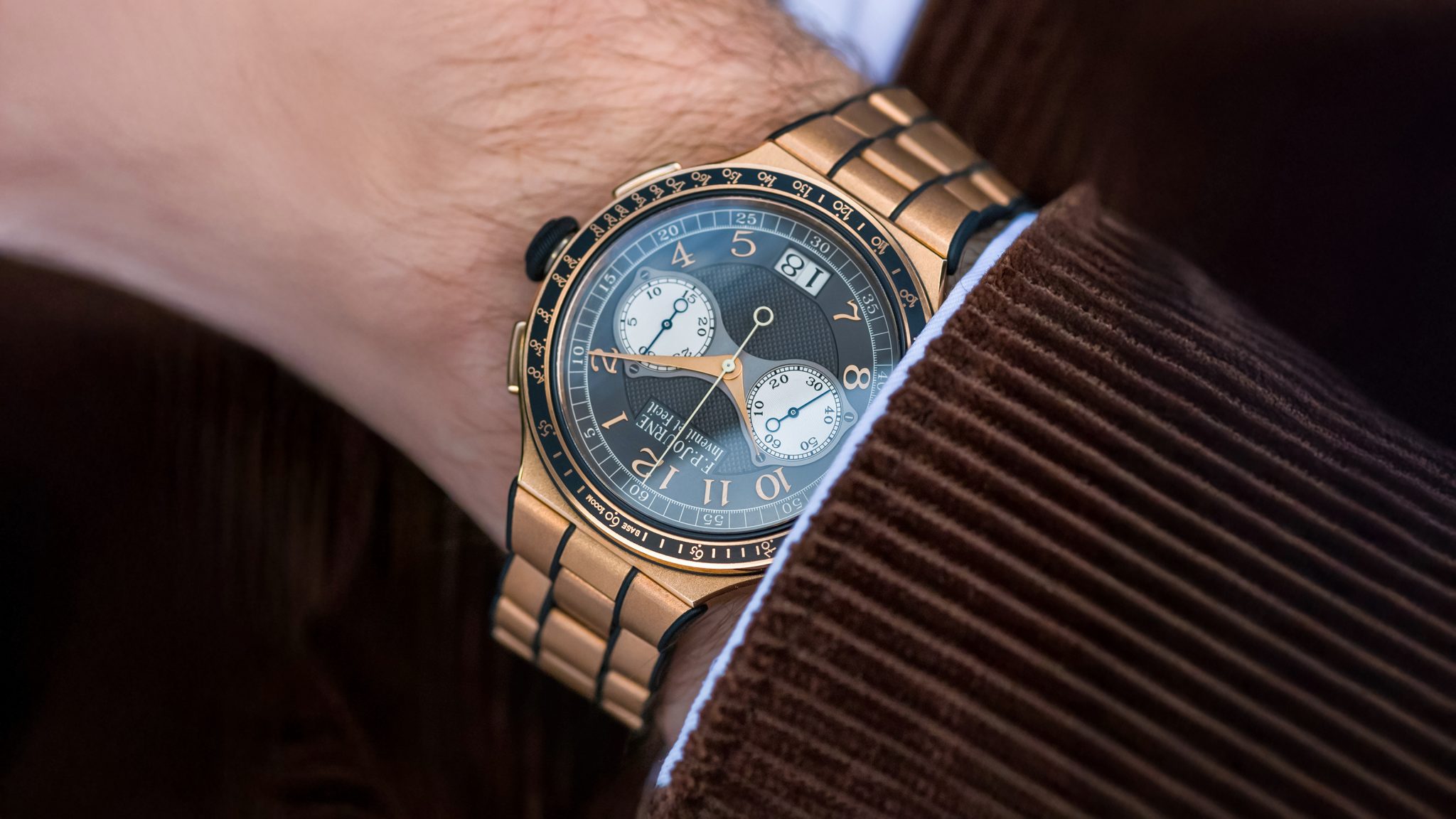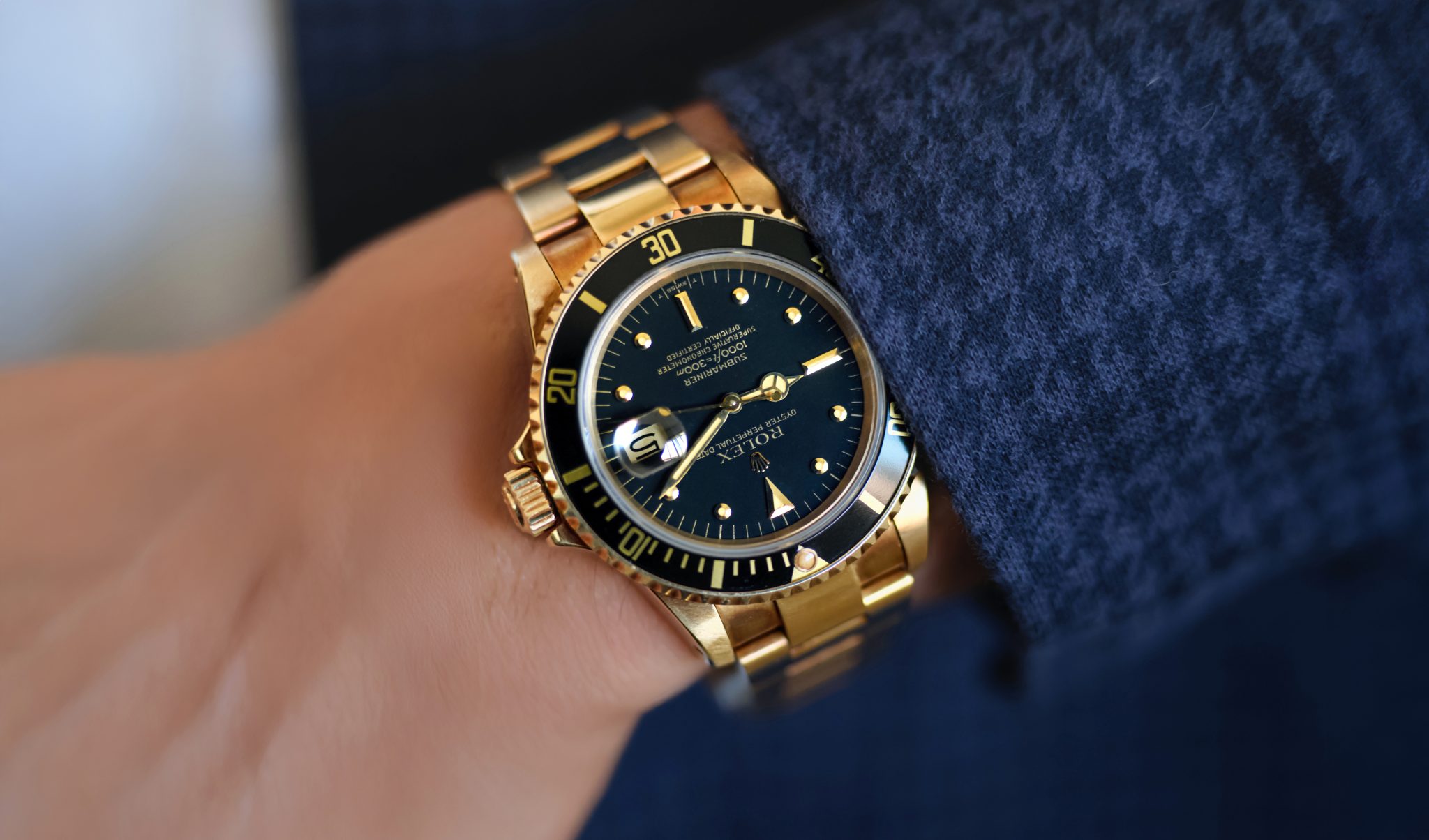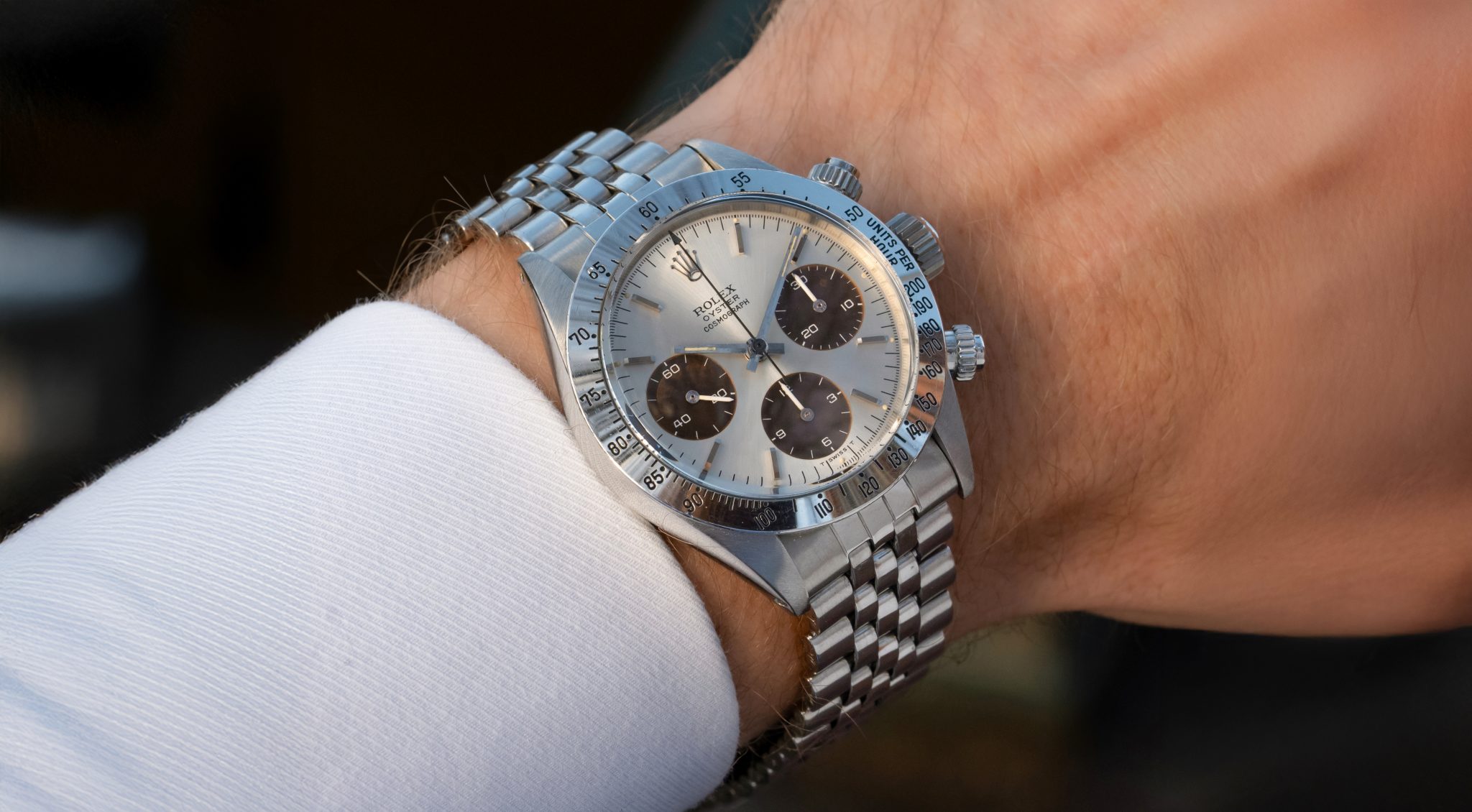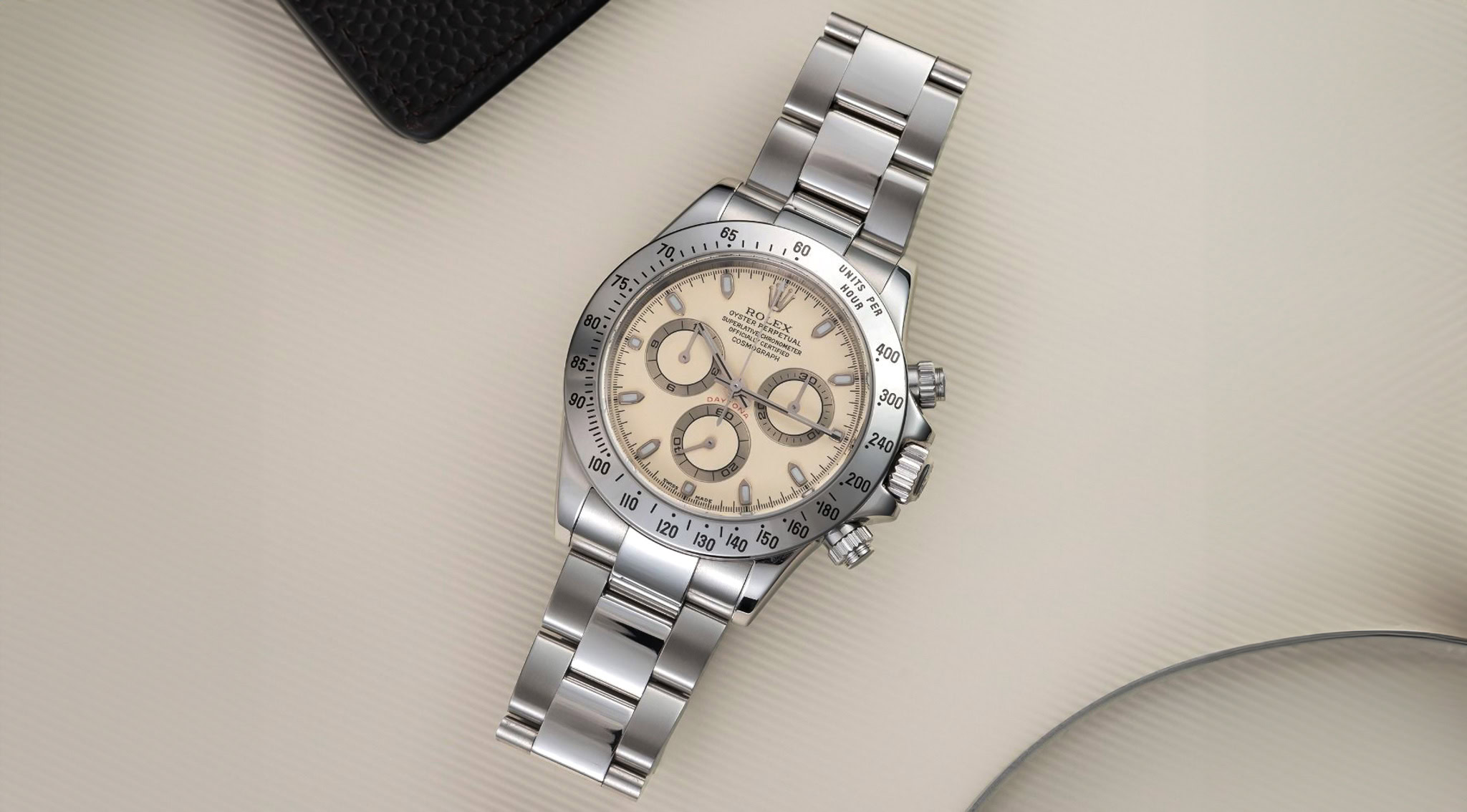
‘Lemon’ Dial 116520 Rolex Daytona
Is this the next Patrizzi dial? That is one of the most interesting, perennially-evolving questions in all Rolex. As watches progress from new to used, then neo or vintage, our relationship to them changes. Collectors are beginning to pay real attention, and sums, for ‘lemon’ dials. Now, these go equally by lemon, cream, or panna; as far as I can work out lemon is just a more evolved state of the latter two names. But the question here is: is this becoming the collectible 116520? Just like no one seems to fully know how to wrap their minds around what the 5970 market will do in the coming years, the early lemon dial 116520 is one giant, citrusy question mark.
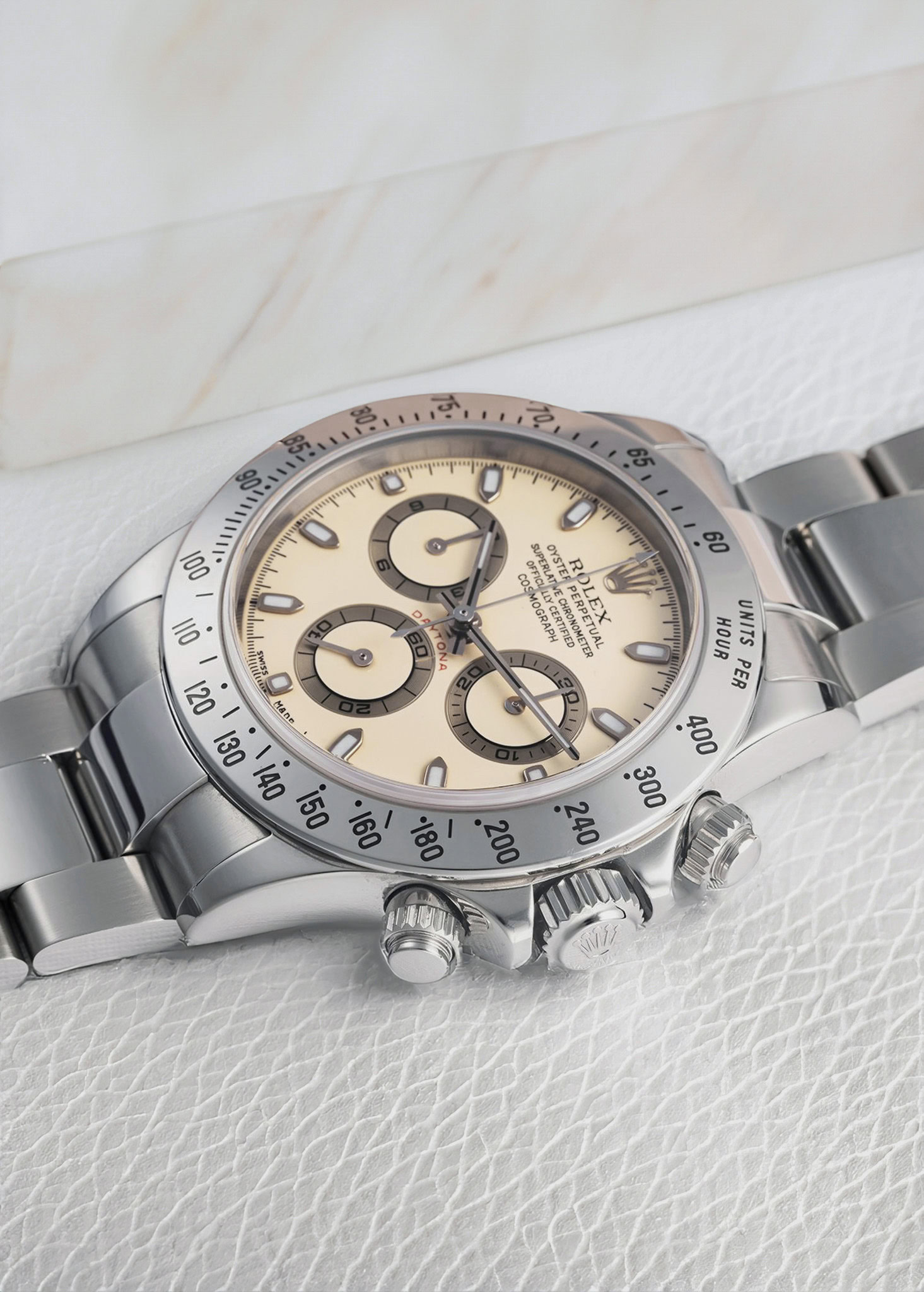
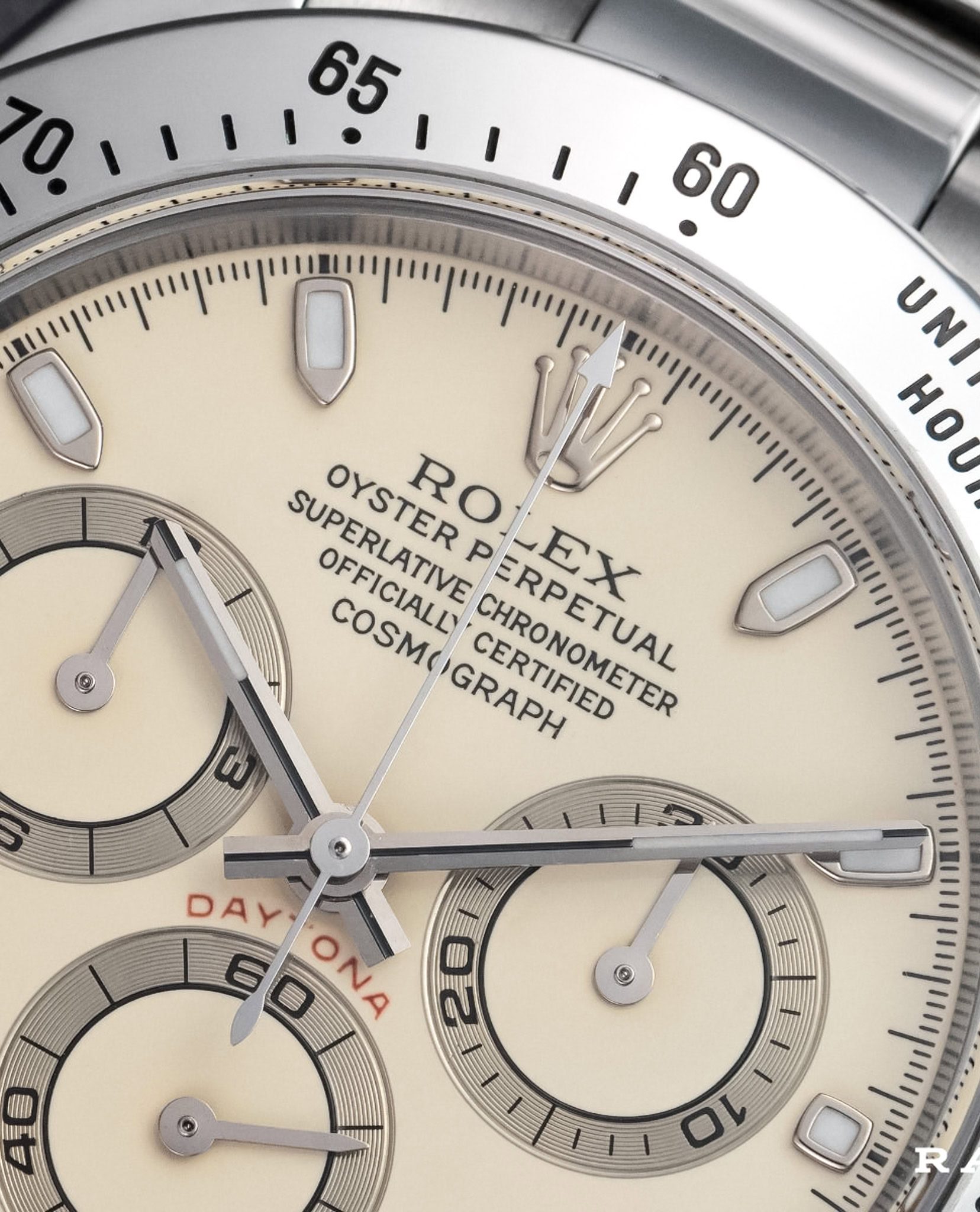
Osvaldo Patrizzi, founder of Antiquorum, was first to clock a change in some 16520 Zenith Daytona dials, where subdial rings would turn a golden tan with sun exposure. Watch collectors adore a good defect or patina, and within the decade they were selling at premium. That’s the roadmap here. But things with the 116520 seem much less certain. Outside of the very recent Le Mans, there aren’t that many collectible Daytonas with polished lugs, full stop. The analogy here is that buying a lemon dial in 2025 would be like buying a Patrizzi in 2001. But much less is known.
These changes have only been observed in P, K, and Y-series serial numbers, the first two years of production (2000-02). It didn’t take Rolex very long to notice the defect this time around, it was fixed quick. But no one seems certain what causes this patina. I’ve heard adamant claims both that this can only happen when a 116520 is left in darkness untouched or equally only in harsh sun with humidity. However it occurs, there is a spectrum from off-white to yellow. And those closer to yellow go by lemon. Values are all over the place too, from 30K-130K USD. This is a young market establishing itself wildly. I’m certain more knowledge be uncovered about these as they continue to age. But that’s really the thing: they do age. They show life on their dials. And they might be the last Daytonas ever to do so.
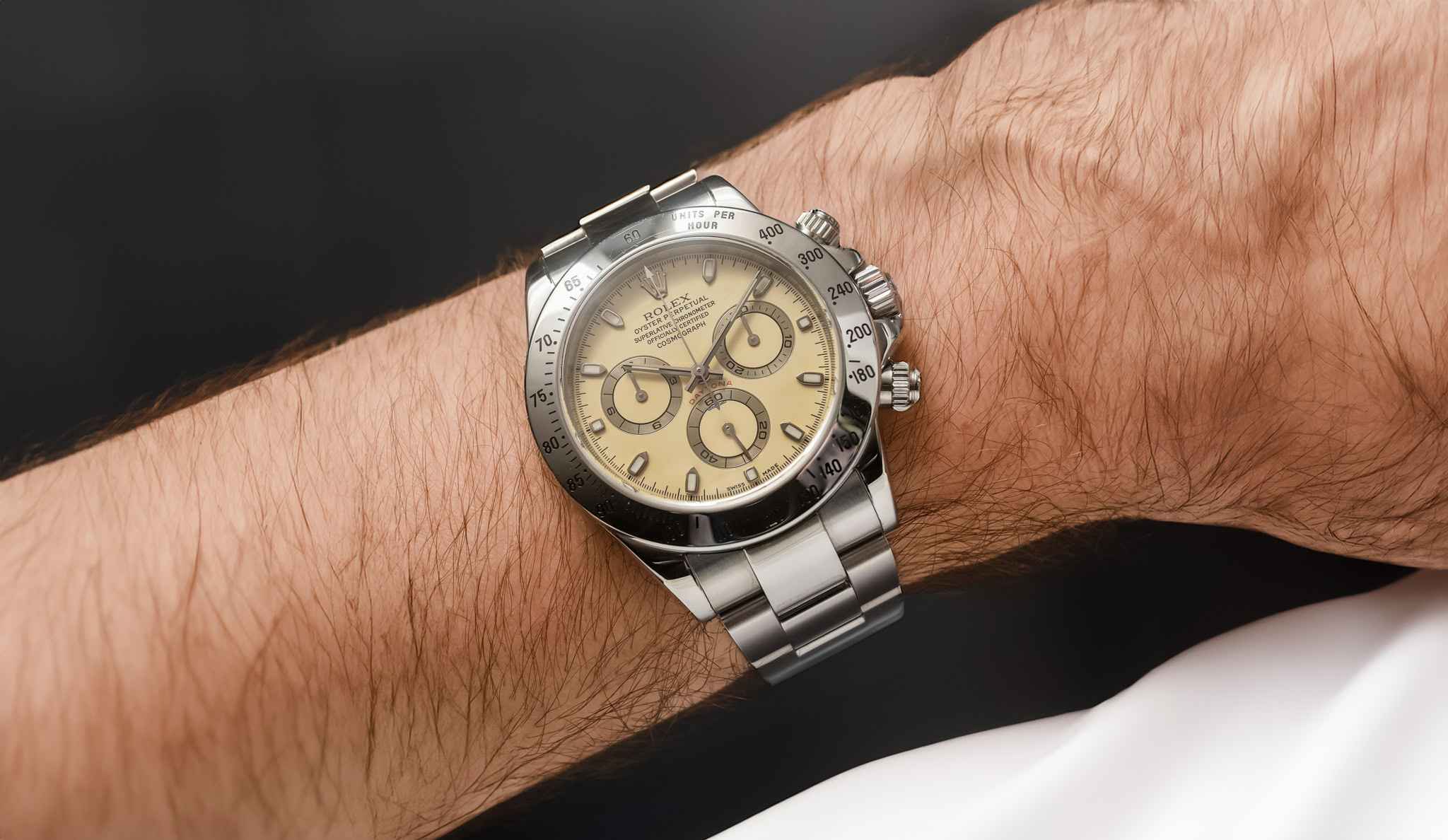
This example has a relatively even and attractive dial, which isn’t always the case. It’s far darker than the dials you’ll find labelled cream, I do believe the lemon name is appropriate here. Its case is great, as great as a polished lug can be. Rather importantly, this one still has all its original documentation, which you’d probably want to see on a watch this recent. It comes from a well-regarded new Polish retailer.






